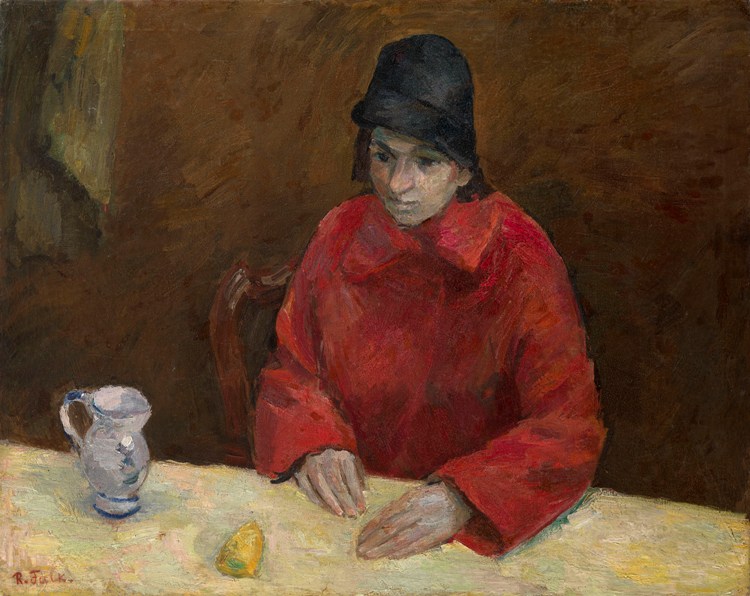MacDougall's Russian Art Auctions 1 December 2011
1 December 2011

9. FALK, ROBERT (1886-1958)
Woman in Red. Portrait of Lyubov Georgievna Popesku, signed.
Oil on canvas, 71.5 by 91 cm.
250,000-350,000 GBP
Provenance: A gift from the artist to Nina Lurie, Moscow.
Thence by descent.
Collection of Olga Dvoretskaya, Moscow, until 1975.
Private collection, Moscow, until 1994.
Private collection, UK.
Exhibited: Robert Falk, Tsentral’nyi dom rabotnikov iskusstv, Moscow, 1939.
Literature: D. Sarabianov, Yu. Didenko, Zhivopis’ Roberta Fal’ka. Polnyi katalog proizvedenii, Moscow, Elizium, 2006, p. 572, No. 801, illustrated.
The portrait of the artist Lyubov Georgievna Popesku, marked the final stage in the creative evolution of Robert Falk’s images of women.
Falk first met Lyubov Popesku in the Crimea in 1916, where he painted her in a notable Nude, now in the collection of the Tretyakov Gallery. The next meeting between artist and model was 15 years later, in a totally different time and place. By this time, having initially arrived in Paris on a short trip, Falk was already more firmly settled in France. His previous enthusiasm for Cézannism during the Jack of Diamonds period had now given way to an ever more intense quest for a unified environment, saturated with colour and with light enveloping people and objects. Seeing Popesku in Paris in 1930, Falk painted her portrait In a Red Turban, as a traditional psychological study and, two years later, Woman in a Blue Beret. The picture Woman in Red occupies a special place in this series.
The pose — in which the artist Popesku sits at a table — was quite random. The fragile female figure is shown as slightly alienated, as if seized by a fleeting moment of melancholy. A distinctive feature of the composition is its circular movement, which dictates the direction of our gaze and leads us from her left hand, placed on the table, up to the slightly bowed head and hat, making the painting harmonious.
According to Falk, the portrait was created as a study for the monumental canvas Old Women. Loneliness which was conceived as a definitive summation of life. This female figure, still young and with traces of her former beauty, conveys much more clearly than other protagonists might the true meaning of the work. D. Sarabianov, speaking of this work, ascribed a special significance to the figure of Popesku. “Turned slightly sideways, away from the centre of the canvas, she is lost in this space, in this world, among other people. The figure of the woman was particularly important to Falk’s intention, demonstrating that the subject of his picture is not simply suffering from old age... It is the expression of emotional fatigue, anxiety, burn-out; in other words, of universal qualities born of the contemporary world — or perhaps intrinsic to mankind.”
Notes on symbols:
* Indicates 5% Import Duty Charge applies.
Ω Indicates 20% Import Duty Charge applies.
§ Indicates Artist's Resale Right applies.
† Indicates Standard VAT scheme applies, and the rate of 20% VAT will be charged on both hammer price and premium.